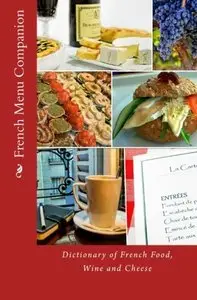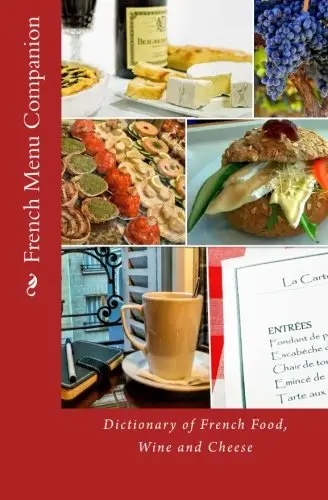"French Menu Companion: Dictionary of French Food, Wine and Cheese" by T Willilam Walker
2015 | EPUB | 254 pages | ISBN: 1511501456 | English | 0.5 MB
2015 | EPUB | 254 pages | ISBN: 1511501456 | English | 0.5 MB
Never again fear a French menu. This encyclopedic translation dictionary is designed for travelers who love food. Whether you are fairly fluent in French or can only recall a few phrases you learned in school, this dictionary will assist you. It contains more than 7,000 food items that you may encounter not only on menus in French-speaking countries, but also in the markets. The entries include 700 cheeses, 350 wines and 200 sauces.
The links in the Table of Contents at the beginning of the book take you to within a few pages of the term you are looking for.
Many of the food items on French menus contain two or more words. A unique feature of this dictionary is that such items are listed multiple times, once for each term. In other words, you do not have to look up two or three different words. Just finding one word reveals what the entire phrase means. For example, “noix de veau” is listed twice: once under “noix” and again under “veau.” In addition, many entries have sub-entries listing other food items associated with the main entry. For example, “agneau” (lamb) has more than a dozen sub-entries: “brochette d’agneau” (lamb kebab), cervelle d’agneau (lamb’s brains), “cuisse d’agneau” (leg of lamb), etc.
This is more than a dictionary. In addition to the English equivalent, you get additional information about each item.
For example, here is a typical cheese entry:
Laguiole cheese [raw cow’s milk (from cows whose basic diet is mountain pasturage); thick, natural whitish to light orange rind (becoming amber-brown with age); aged at least four months (and up to twelve months); uncooked, un-pressed, supple, velvety pale yellow hard cheese with warm flavors of dried fruits, toast and butter; also known as Fourme de Laguiole; Aubrac, Midi-Pyrénées, Auvergne, Languedoc-Roussillon]
A typical wine entry:
Pauillac AOC red wines from the Médoc area of Bordeaux, featuring such famous premiers crus as Château Lafite-Rothschild, Château Mouton Rothschild and Château Latour [typically deep purple, nearly black with violet tints when young, mellowing to ruby with amber tints after many years; these wines tend to be highly concentrated and complex, typically expressing blackcurrant, plum or blackberry aromas with spicy notes of vanilla, licorice, pepper or menthol and perhaps some toasted woodiness; usually very well-structured but with strong bitter tannins in youth softening with age to support powerful but fine, robust but delicately well-balanced aromas; the dominant grape is cabernet sauvignon, supported by cabernet franc, merlot, carménère and petit verdot]
A typical regional dish:
canard au sang duck “with blood” [a sauce is made by pressing the blood out of the carcass, crushing the liver and adding them to a reduction of red wine; roasted for 20 minutes then grilled to finish; specialty of the Seine valley, Normandie]
A sauce:
sauce canotière sauce made with fish stock, butter and flour and a dash of cayenne pepper
In addition to standard French terms, there are hundreds of regional terms. For instance, in Alsace-Lorraine you may find Griespflutta (a semolina dumpling), in Corsica, U Muntangnolu (sheep cheese), in the Basque country, a txangurro (a crab dish), while in Bretagne, you might find a rustic dish called kig-ha-farz (porridge-dumpling). In this way, you need not limit yourself to the usual tourist restaurants. You can explore the small towns and villages to discover some very interesting local dishes. This dictionary will help you learn about these regional specialties.
The author travels frequently and extensively throughout France, Switzerland and Belgium, always on the lookout for new food items to add to the book. His encounters with remarkable French dishes have inspired him to create this translation dictionary so that his fellow travelers might be able to read menus more easily and partake of French cuisine sans souci.



